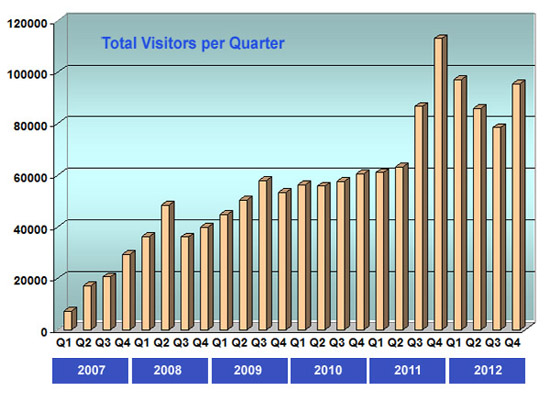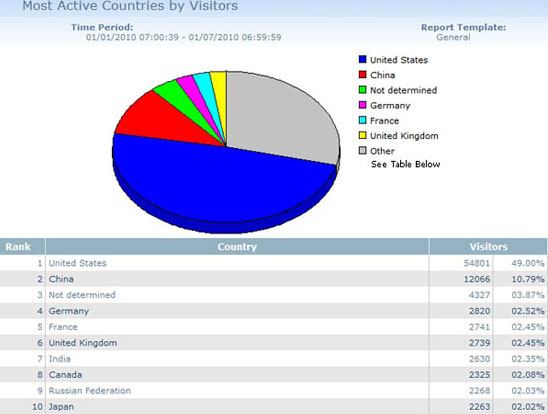

2 - The HP Memory Project Today
October 2012
The Project as it Stands Today
The HP Memory Project that you see today is the result of 15 years of concentrated work on the preservation of Hewlett Packard's industrial success story, and on the memory of the people who generated this success.
Hewlett Packard's success is the result of the exceptional creativity of HP design engineers. Preserving the products they invented is one necessary part of this project. Preserving their memories and stories of invention will create a treasure from the human, historical and technical points of view. Preserving the documents they published during their work is another treasure for future education.
The combination of all these elements make the HP Memory Project, one of the most historically significant HP archives. It is a tribute and showcase for the company's history of innovation, and is truly representative of America's finest hour. It deserves a special place to honor and remember the countless individual innovative contributions that built this organization.
Today, the HP Product collection has reached approximately 600 instruments, plus 150 computers and peripherals.
While building this collection, the guiding rule was to acquire the most significant products which best illustrate the influence they had on the evolution of electronic and computing technology over 60 years.
A large portion of the equipment collection was acquired during the early 2000s, taking advantage of the huge surplus generated by companies converting from analog to digital instrumentation. Some vintage HP instruments were also found during this period, but they were rarely the most significant products. Most of the HP masterpieces had already become hard to find by the beginning of the new century. Populating the collection with one of each key product was a ten year search, mostly on ebay. Some pivotal products required an even longer wait, and sometimes lots of money.
Today the result is a collection that includes almost every key product which contributed to the HP industrial success story. A number of these products are frequently symbolic of an important technology evolution milestone. Consequently, these products could be used in an exhibition of a 60-year timeline of the Hewlett Packard contribution to technology evolution.
Such an exhibition could be envisioned in many different ways. The next chapter, "Exhibiting 60 years of Science and Technology Contributions," will develop some of our thoughts on trying to accomplish that objective with a physical presence, at some significant location.
Every item listed in the collection database below is, in perfect condition, ready for an exhibition. Most are in working condition. This would allow an exhibition that is not just limited to their display, but could also permit a live demonstration of their capabilities.
Anyone can get an accurate idea of the overall quality of the collection by browsing this website. A full 95% of the instrument and computer pictures are original photographs by the author, and represent the actual collection. The most important places to visit for an overview of the collection's products are the [ 1939-1960 ] and [ 1960-1980 ] "Quick-Tour" selector pages. (The 1980-2000 pages are under construction.)
Even a quick visit can give you an idea of the collection's breadth, by just looking at the following five "extremes" from the collection:
- The smallest product: An HP-01 wristwatch (1977)
- The largest and heaviest instrument: A HP-3048A Phase Noise Measurement System
- The oldest HP Instrument: An HP-200B Audio Oscillator "Round-top corners" (1941) (shown with other members of the early Model 200 family)
- The newest HP Instrument: An HP-8510C Network Analyzer. (Shown, 3rd from the left, among many others in the HP Memory Project Lab)
- The newest Agilent Instrument: An E6008B Mini-OTDR (Optical Time Domain Reflectometer)
Except for some recent Agilent instruments, and some recent HP computers and peripherals, the collection timeline stops at the HP / Agilent split in the year 2000. But it could easily be continued if the project were to be hosted by one or both of these companies.
The HP Instruments Collection
The Instrument Collection Database is up to date, and a detailed classification by product line, is available in the [COLLECTION] chapter of this website.
The link immediately below gives you "live" access to the key information in the complete Instrument Database.
The HP Computers and Peripherals Collection
The Computer Hardware Collection database is up to date, and a detailed classification, by product line, is available here on the website. Peripherals and Software are not yet classified or indexed, but most of the original software is available for each computer in the collection. For example, every HP-UX release from 2.0 up to 11.i is available on their original media, and includes their original documentation. This software comprises a good 450 lbs. of paper to describe the HP-UX operating system alone.
The link below gives "live" access to the major information in the Computer Hardware Database.
Below is a short-form inventory of the most significant documents available in the collection
The Hewlett Packard general catalogs
Product Data Sheets
The Hewlett Packard Journal
Measure Magazine
Hewlett Packard Application Notes
Hewlett Packard Product Notes
Hewlett Packard Seminar Notes
Instrument User and Service Manuals
Instrument Microfiches
Computer Software and Documentation
DO IT WELL, AND SHOW IT!
The World Wide Web was the ideal showcase for the Project.
Our prime objective has been to raise the overall HP Memory Project website quality to that which does justice to the HP story.
Another important objective of the website has been to make contact with other curators of Hewlett Packard history, and to collect their personal memories, written in their own words. With the help of John Minck this objective has had great success since the second half of 2011. Today, after two years of hard work and close collaboration with John Minck, twelve in-depth memories from former HP employees are online in the [TIMELINE] - [HP Memories] chapters.
www.hpmemory.org was opened on October 2006. It is today the result of more than 10,000 hours of work, containing 1150 HTML pages, and 4800 pictures. A search facility has been implemented on the website as of May, 2012. At the time of installation, indexing the website generated a 22,000 keyword database. It can be tested using the search box below:
Overall Website Statistics
The best indicator of our vision's success is the remarkable statistics on reader visits to the website, which have grown during the past five years, and are shown on the bar graph chart below.
The following pie chart illustrates the most active countries during 2010.
Detailed Website Statistics
More detailed, monthly statistic pages have been accumulated, starting September 2011. These pages are intended for restricted access to key personnel, and are not linked from anywhere else on the website.
Cross promotion of the HP Memory Project and Website from various publications
Two years after its rollout, the website began to get some excellent recognition from other publications, websites and blogs. The links below give access to several of the most effective ones.
- Agilent Infospark Employees Newsletter
- HPREC NEWS, HP Agilent Retired Employees Club
- HP PHENOMENON, Chuck House's blog
- Low-PowerDesign Website, article by Steve Leibson
- EDA360 Website, article by Steve Leibson
The HP Alumni Association, HPAA, website gives continual promotion to its 20,000+ members
Sometimes, the publication of a new chapter dedicated to the story of an important personality in HP history generates astounding results in the Google rankings. This was the case in February 2010, after publishing John Minck's tribute for the tenth anniversary of the passing of Bill Hewlett. Google ranked hpmemory.org at the fourth place on the "Bill Hewlett" keyword search.
Appreciation from people who made the Hewlett Packard success story what it is:
By far the most gratifying result of our website activity, came from some celebrities who themselves made the Hewlett Packard success story what it was.
Alan Bagley
 I have just discovered your web site and I am astounded by the amount of detail you have in your collection, and the effort you have put forth to make it available on your web site. You even have a lot on the Frequency and Time Division which I used to run.
I have just discovered your web site and I am astounded by the amount of detail you have in your collection, and the effort you have put forth to make it available on your web site. You even have a lot on the Frequency and Time Division which I used to run.Congratulations on all of your fine work.
Alan Bagley
Zvonko Fazarinc
 I am very touched by your loyalty to HP, which you expressed so eloquently with your collection of HP instruments. As I am reading the recently published book "Bill and Dave" and learning more details about their early activities I am even more appreciative of your work, which is preserving so much of the history of these two men. I consider myself fortunate to have known them personally and interacted with them.
I am very touched by your loyalty to HP, which you expressed so eloquently with your collection of HP instruments. As I am reading the recently published book "Bill and Dave" and learning more details about their early activities I am even more appreciative of your work, which is preserving so much of the history of these two men. I consider myself fortunate to have known them personally and interacted with them.I want to stay in touch with you and wish to be of any help to you in promoting your fine work.
Zvonko Fazarinc
Art Fong
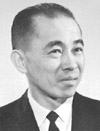 Congratulation on all the work you have done on HP Memory.
Congratulation on all the work you have done on HP Memory.You are doing a great job! It is a lot of work.
Art Fong
Jim Hall
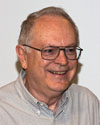 I really appreciate your effort to make the LaserJet Memory more accessible over the Internet. Your work to help preserve HP memories is great. I have enjoyed several different topics on your website but never had a chance to thank you!
I really appreciate your effort to make the LaserJet Memory more accessible over the Internet. Your work to help preserve HP memories is great. I have enjoyed several different topics on your website but never had a chance to thank you!Thanks,
Jim Hall
Chuck House

John and Marc,
I was really impressed by Hank Taylor's story. On reflection, I am even more struck by how valuable it is for the whole community that you are providing this vehicle for stories to be gathered and shared. It is an immense contribution, and I for one am incredibly impressed by both how much work you've done to get it up and running, and how terrific the stories are that are being collected and presented.
Kudos!
Chuck House
Steve Leibson
 Marc Mislanghe, creator of the elegant and wonderful HP Memory Project at www.hpmemory.com site, has posted the Tom Osborne interview plus the Dave Cochran interview I made last October. Cochran developed the code for HP's first two calculators: the HP 9100 and the HP 35. You can see both interviews on Marc's site here. If you're at all interested in HP history, you owe it to yourself to look at Marc's site. It is truly a work of art.
Marc Mislanghe, creator of the elegant and wonderful HP Memory Project at www.hpmemory.com site, has posted the Tom Osborne interview plus the Dave Cochran interview I made last October. Cochran developed the code for HP's first two calculators: the HP 9100 and the HP 35. You can see both interviews on Marc's site here. If you're at all interested in HP history, you owe it to yourself to look at Marc's site. It is truly a work of art.Steve Leibson
Hank Taylor
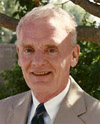 Your invitation and enormous support in writing an HP history got me moving and provided the motivation to get the job done.
Your invitation and enormous support in writing an HP history got me moving and provided the motivation to get the job done.Not only that, the finished product, with your skills, enthusiasm and supplemental materials, is far superior to what it ever could have been without your help.
Thank you for your patience and stalwart encouragement and perseverance.
I'm deeply indebted to you!
Hank Taylor
















